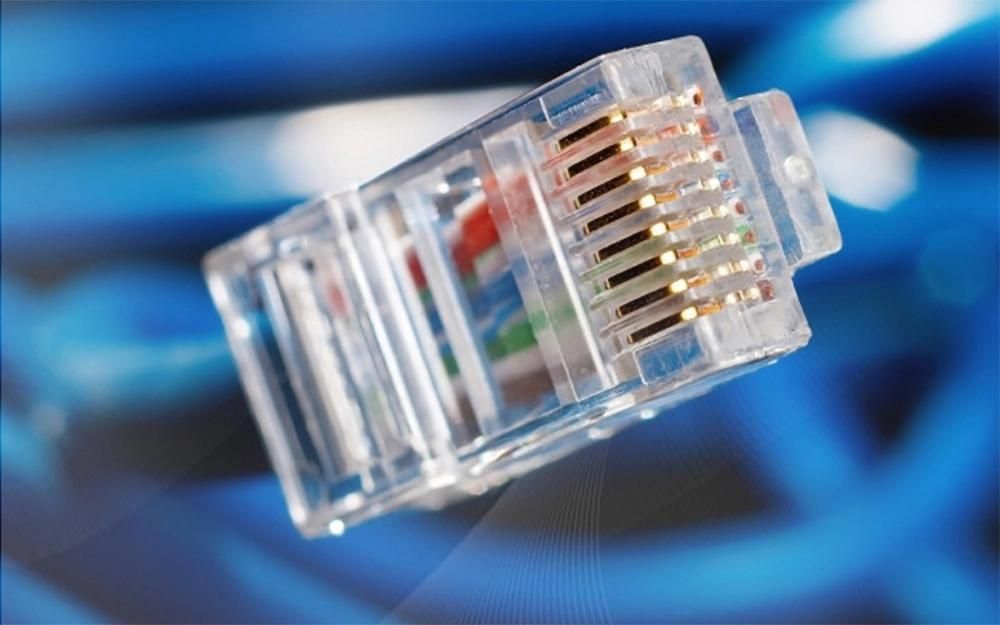June 7, 2021
With the variety of cable available to the networking industry, it is important to know which type of cable to use for your installation so that you ensure overall network performance, stability and speed. In this article, we discuss Ethernet cable and the most common standards used in the industry and network deployments today. Watch the video below for a summary of this article.
Modern Ethernet is based on the principle of using 4 twisted pairs inside a single cable jacket. The twist is clearly visible when physically inspecting the pairs inside the cable. What is the significance of twisting pairs? It is done to prevent a phenomenon known as ‘cross-talk’ which is essentially the occurrence of electromagnetic interference across the line. Each pair uses a different twist rate per meter which further facilitates noise rejection.
Cables are split into different categories commonly known as a CAT rating. This identifies cable characteristics such as twist rate, wire thickness, anti-crosstalk properties and shielding. Most importantly it defines the overall bandwidth capability on each category which takes all factors into account. In order to improve bandwidth capacity for each cable type, you will generally need to increase wire thickness and use a higher twist ratio per pair. This means that as the cable capacity specification improves, it also becomes more rigid, making it more difficult to install.
Although possible, we generally don’t recommend that cable runs exceed more than 100m, as speeds become unpredictable beyond this point. Let’s take a look at some of the most common cable categories available.
CAT5e Ethernet Cable
CAT5e is arguably the most commonly used category of Ethernet cable in South Africa today and is capable of up to Gigabit speed transmission. The reason it is so popular is that it is both cost-effective and easy to use for end-to-end installations. It uses 100MHz of bandwidth without additional cross-talk division. This cable meets all the minimum requirements for Gigabit performance while keeping costs down.CAT6 Ethernet Cable
If we look at CAT6, it is capable of 1Gbps+ speeds at 100m, and even 10Gbps at up to 55m. It uses 250MHz of bandwidth to achieve this speed and is a good choice for new installations. However, its increased cable thickness requires a bit more skill to install and the RJ45 connectors are not as easy to crimp as with CAT5e. It's also worth mentioning that you should never use CAT5e RJ45 connectors on CAT6 cable.CAT6a Ethernet Cable
Next, we have CAT6a which offers an even greater transmission speed at 10Gbps for runs up to to 100m for 500MHz of bandwidth. These cables should be used in high capacity LAN’s with 10G switching environments. It’s more challenging to install and makes use of RJ45-CAT6a connectors which again are not compatible with other cable types.CAT7 Ethernet Cable
You may have heard of CAT7 cabling and assumed it is the latest and greatest, faster version of CAT5e or CAT6 cabling. However, CAT7 is not an actual IEEE cabling standard, but a proprietary design that does not have an official blessing from the networking industry.It does not use RJ45 connectors, but a proprietary connector. Without official IEEE or EIA standardisation, any “Category 7” cabling you purchase will be different from manufacturer to manufacturer.
CAT8 Ethernet Cable
If you’re looking for a faster copper alternative to CAT6a, then CAT8 is your answer. CAT8 is the official successor to CAT6a cabling. It is recognised by the IEEE and all parts are standardized across manufacturers. The primary benefit of CAT8 cabling is faster throughput over short distances with a maximum speed of 40Gbps.Due to these distance limitations, the best-use scenario for CAT8 would be inside a data centre to connect network equipment to each other. It would not be cost-effective to use CAT8 for an office as the distance would quickly decrease the speed throughput to that of CAT6a, which is cheaper to procure and install for the same performance.
As the category increases so does the price tag. In addition, more skilled installers are typically required which may also hike up the cost of deployment.
| Category | Bandwidth | Speed | Distance |
|---|---|---|---|
| CAT5e | 100MHz | 1Gbps | 100m |
| CAT6 | 250MHz | 1Gbps+ | 100m |
| CAT6a | 500MHz | 10Gbps | 100m |
| CAT7 | 600MHz | 10Gbps+ | 100m |
| CAT8 | 2000MHz | 40Gbps | 30m |
What's at the core?
Generally speaking, Ethernet standards dictate that twisted pairs should be made from pure copper. Vertical and horizontal cable installations should be done with solid core cable, while fly or patch leads use stranded copper for more flexibility. Thickness is outlined using the American Wire Gauge (AWG) which determines the minimum core diameter of each wire. It is important to consider that in many cases, vendors will provide the bare minimum thickness to keep costs down while still certifying to the standard.Scoop's Linkbasic cable is made from pure copper at the thickest possible variant, which translates into complete peace of mind that you will be able to get the best performance out of your hardware. For CAT5e this is 0.50mm and CAT6 and CAT6a are 0.565 and 0.575mm respectively. This is why we are able to confidently recommend using Linkbasic cable for every installation.
| Category | AWG | Industry Minimum (mm) | Linkbasic (mm) |
|---|---|---|---|
| CAT5e | 24 AWG | 0.485 | 0.50 |
| CAT6 | 23 AWG | 0.546 | 0.565 |
| CAT6a | 23 AWG | 0.546 | 0.575 |
Copper Clad Aluminium (CCA) cable, on the other hand, entertains huge price discrepancies due to the fact that the aluminium cores are merely plated with copper as opposed to being pure copper. Although - not ideal, it makes for an attractive price proposition. But how does it perform compared to real copper?
First of all, copper is stronger than aluminium. This means that copper can handle higher pull tensions when installing, so there is less chance of damaging it. You are also likely to have fewer failed terminations when using copper, as CCA can shift out of place while crimping since it is more flimsy. The aluminium in CCA has higher voltage resistance which means Power over Ethernet or PoE will be negatively affected. If you choose CCA cable, make sure that you are using a power supply with enough voltage to accommodate the extra loss in power.
In our view, the only benefit to using CCA is purely cost and to appease the price-conscious market segment, we stock a full range of CCA cable under our Scoop brand. If you are unsure whether your current cable is copper or CCA, simply scratch the surface on one of the cores or check the supplier's datasheet to confirm what you are buying.
Shielded Cable
When it comes to the use of shielded or unshielded cable, there are a few things to look at.Cable structure can be categorised using a simple method with each letter representing the characteristics of the cable.
For example, UTP = Unshielded Twisted Pair while FTP = Foil shielded Twisted Pair.
TP – Twisted Pair
U – Unshielded
Unshielded cable is mainly used indoors in a dedicated cable sleeve. In open runs, it should be kept at least 1m away from electrical cables to prevent interference which will cause packet loss. If you are sharing sleeves or running directly across power cables, you should use shielded cable.
F – Foil shielding
FTP shielded cable has a foil shield around the twisted pairs. This helps to reduce electromagnetic interference (EMI) from outside sources. Most will contain a drain wire which is used as an Earth conductor to help redirect any charges that might have affected the line or connected devices.
S – Braided shielding (outer layer only)
Shielded cable will generally provide a more reliable connection for devices at risk from Electro-Static Discharge (ESD). This is the cable you should use for outdoor wireless installations carrying PoE. For this to be effective a Shielded RJ45 connector is required to be crimped to the ESD drain wire. We stock a range of UV protected shielded cables and have a pre-terminated option to save time and hassle. Bear in mind that wireless devices would usually only require CAT5e due to sub Gigabit speeds in most situations.
Regardless of which cable you choose, we hope that you found this article informative. You can find more information on our product pages and datasheets.








